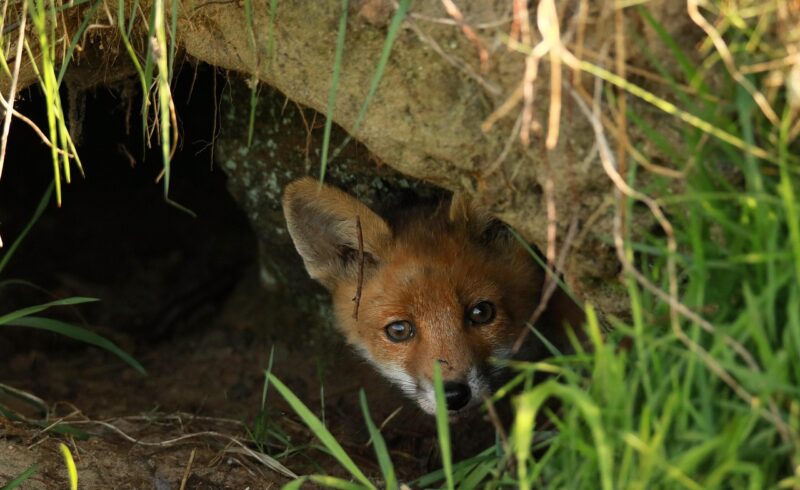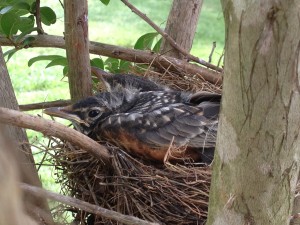
Before all the spring vegetation grows back, why not go on a hunt for animal burrows? You don’t even have to go into the woods – burrows can often be found in backyards and around buildings, too!
A burrow is a hole or tunnel that an animal digs for security. It might consist of simple, short tubes, or it could be an elaborate network of tunnels and chambers. Some animals build complex systems and spend much of their time underground. Prairie dogs and badgers build tunnels up to 10 feet wide and up to 30 feet deep.
Many burrows serve as a place of protection. Staying below the surface means the animals are safer from predators. Groundhog burrows have numerous openings where the groundhogs can disappear from danger at a moment’s notice. Armadillos dig burrows to escape predators like coyotes and bobcats. Other burrows are dug for temporary safety. Red foxes sleep out in the open, but they dig quick-escape dens. Most of these burrows are just big enough for the animal to squeeze into, so larger predators can’t follow them.
Burrows serve as a place to store food. Chipmunks store seeds and berries in underground pantries to use throughout the winter. Eastern woodrats, also called pack rats, collect seeds, nuts, and plant material, storing them in hidden caches within their burrows.
Some animals use burrows for giving birth and raising young. Coyotes, foxes, and wolves create burrows with multiple chambers and entrances. They may even dig multiple dens so they can move the pups if necessary.
Animals make their burrows in all kinds of surfaces. Southeastern pocket gophers dig into loose, sandy soil to create extensive tunnel systems. Eastern moles burrow through lawns and forest floors. Armadillos prefer moist, soft soil for digging their deep burrows. Some animals take advantage of burrows that have already been made. Burrowing owls nest in abandoned gopher tortoise burrows.
You may find a burrow near your house. Search along the foundation, underneath a deck or storage shed, or beside a retaining wall. Check for mole hills in your backyard. Most likely, you’ll find signs that an animal feels at home near you! You might want to make a map of all the burrows you find nearby. Just be sure not to disturb an animal or its home.
To Learn More:
Want to know more about animal burrows? Check out these sites:
“Burrow.” National Geographic.
“Burrowing Mammals.” Iowa State University Natural Resource Ecology and Management.
“Identifying Wildlife Holes.” Backpacker.










